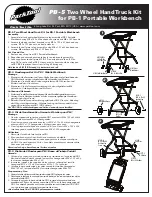
Dynamic TEACH and Adaptive Thresholds
• Teach on-the-fly
• Establishes a single switching threshold
• Threshold position is adjustable using “+” and “-” buttons (Manual Ad-
just)
Dynamic TEACH is best used when a machine or process may not be stop-
ped for teaching. It programs the sensor during actual sensing conditions,
taking multiple samples of the light and dark conditions and automatically
setting the threshold at the optimum level.
Dynamic TEACH activates the sensor’s adaptive threshold system, which
continuously tracks minimum and maximum signal levels, and automatically
maintains centering of the switchpoint between the light and dark condi-
tions. The adaptive threshold system remains in effect during Run mode.
The adaptive routine saves to non-volatile memory at least once per hour.
Sensor positions
threshold midway
between taught conditions
Darkest
(no signal)
Most Light
(saturated
signal)
Output OFF
Output ON
Darkest Taught
Condition
Lightest Taught
Condition
Position
adjusted by
Manual Adjust
Figure 2. Dynamic TEACH (Light Operate shown)
Bar Graph LED Following TEACH
Relative Signal Difference / Recommendation
6 to 8
Excellent: Very stable operation
4 to 5
Good: Minor sensing variables may affect sensing reliability
2 to 3
Low: Minor sensing variables may affect sensing reliability
1
Unreliable: Consider an alternate sensing scheme
When Dynamic TEACH mode is used, the output ON state (Light or Dark Operate) remains as it was last programmed. To change the
output ON state, use Setup mode (see
on page 8).
Dynamic TEACH and Manual Adjust
The switchpoint may be adjusted (fine-tuned) whenever the sensor is in Run mode by clicking the “+” and “-” buttons. However, when a
manual adjustment is made, the adaptive threshold system is disabled (cancelled).
Push Button
0.04 seconds < "Click" < 0.8
seconds
Remote Line
0.04 seconds < T < 0.8 seconds
Result
Access Dy-
namic TEACH
Mode
• Press and hold Dynamic push
button > 2 seconds
• Hold remote line low (to
ground) > 2 seconds
Power LED: OFF
Output LED: OFF
Bar graph: LO & DO alternately flashing
TEACH Sens-
ing Condition
• Continue to hold push button
• Present Output ON and OFF
conditions
• Continue to hold remote line
low (to ground)
• Present Output ON and OFF
conditions
Power LED: OFF
Output LED: OFF
Bar graph: LO & DO alternately flashing
Return to RUN
Mode
• Release push button
• Release remote line/ switch
TEACH Accepted
Power LED: ON
Bar graph: One LED flashes to show
relative contrast (good signal difference shown;
see table above)
Sensor returns to Run mode with new settings.
D10 Expert Series with Bar Graph Display and Discrete Output
4
www.bannerengineering.com - tel: 763-544-3164
P/N 117830 Rev. F































